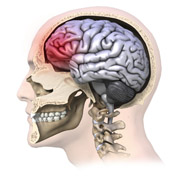Research and Innovation, UNL Office of

Center for Brain, Biology, and Behavior: Faculty Publications
Document Type
Article
Date of this Version
7-2024
Citation
Psychological Medicine (2024) 54: 4,212–4,221
doi: 10.1017/ S003329172400240X
Abstract
Background. Machine learning (ML) has developed classifiers differentiating patient groups despite concerns regarding diagnostic reliability. An alternative strategy, used here, is to develop a functional classifier (hyperplane) (e.g. distinguishing the neural responses to received reward v. received punishment in typically developing (TD) adolescents) and then determine the functional integrity of the response (reward response distance from the hyperplane) in adolescents with externalizing and internalizing conditions and its associations with symptom clusters.
Methods. Two hundred and ninety nine adolescents (mean age = 15.07 ± 2.30 years, 117 females) were divided into three groups: a training sample of TD adolescents where the Support Vector Machine (SVM) algorithm was applied (N = 65; 32 females), and two test groups– an independent sample of TD adolescents (N = 39; 14 females) and adolescents with a psychiatric diagnosis (major depressive disorder (MDD), generalized anxiety disorder (GAD), attention deficit hyperactivity disorder (ADHD) and conduct disorder (CD); N = 195, 71 females).
Results. SVM ML analysis identified a hyperplane with accuracy = 80.77%, sensitivity = 78.38% and specificity = 88.99% that implicated feature neural regions associated with reward versus punishment (e.g. nucleus accumbens versus anterior insula cortices). Adolescents with externalizing diagnoses were significantly less likely to show a normative and significantly more likely to show a deficient reward response than the TD samples. Deficient reward response was associated with elevated CD, MDD, and ADHD symptoms.
Conclusions. Distinguishing the response to reward relative to punishment in TD adolescents via ML indicated notable disruptions in this response in patients with CD and ADHD and associations between reward responsiveness and CD, MDD, and ADHD symptom severity.
Included in
Behavior and Behavior Mechanisms Commons, Nervous System Commons, Other Analytical, Diagnostic and Therapeutic Techniques and Equipment Commons, Other Neuroscience and Neurobiology Commons, Other Psychiatry and Psychology Commons, Rehabilitation and Therapy Commons, Sports Sciences Commons


Comments
Open access